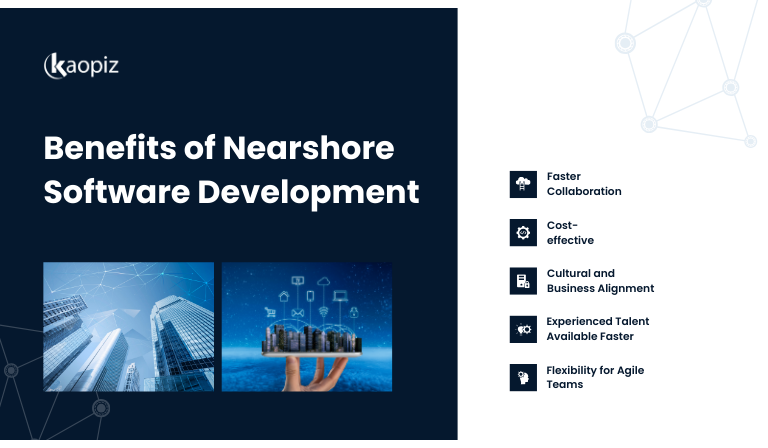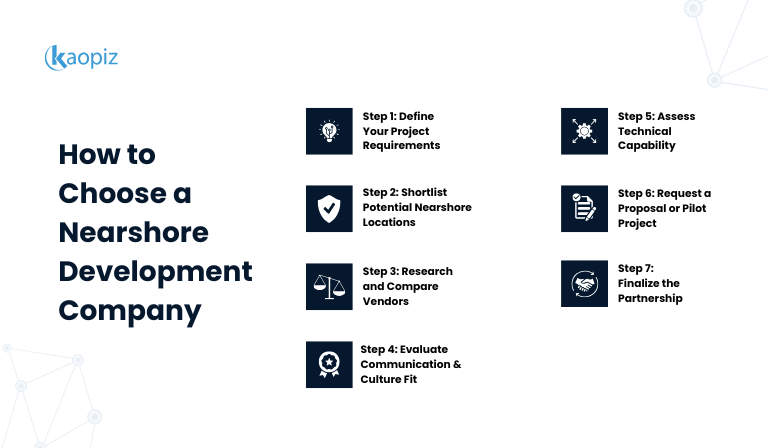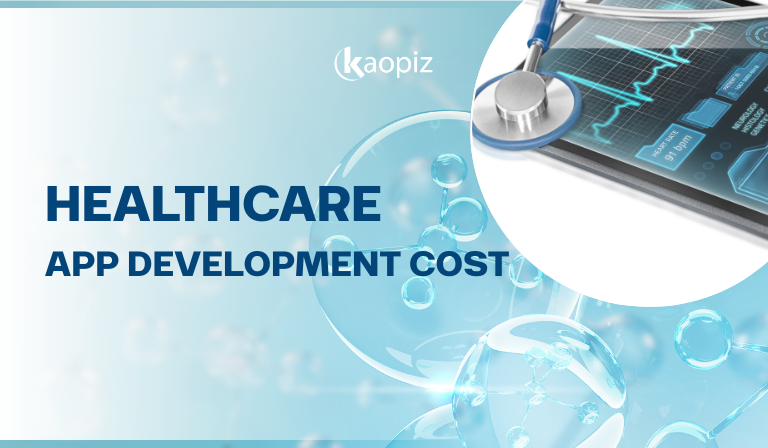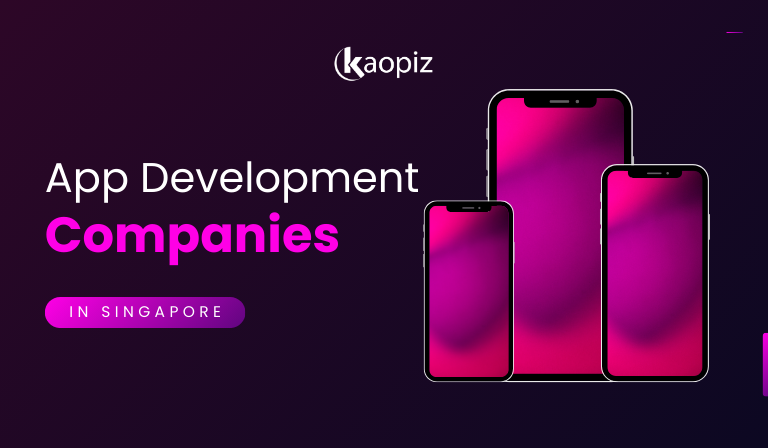Nearshore Software Development: A Complete Guide for 2025
In an era where digital transformation is no longer optional, companies around the globe are seeking smarter, more flexible ways to build and scale their software development capabilities. A rising strategy in 2025 is exploring alternatives to nearshore software development outsourcing — an approach that combines cost-effectiveness with real-time collaboration and strong cultural alignment.
In this comprehensive guide, we walk you through everything you need to know about nearshore software development — how it compares to offshore, models, the benefits, challenges, and why Vietnam is becoming one of Asia’s top nearshore destinations. Let’s dive in.
Table of Contents
- What Is Nearshore Software Development?
- Nearshore vs Offshore vs Onshore: Key Differences
- Types of Nearshore Development Models
- Benefits of Nearshore Software Development
- Who Should Consider Nearshore Software Development?
- Common Challenges and Solutions for Nearshore Development
- Why Vietnam Is an Ideal Nearshore Software Development Destination in Asia?
- How to Choose a Nearshore Development Company
- Future of Nearshore Software Development
- Kaopiz – Your Best Nearshore Software Development Partner
- Conclusion
- FAQs
What Is Nearshore Software Development?
Nearshore software development is a form of outsourcing in which companies delegate software development tasks to teams located in nearby or neighboring countries, typically sharing the same or similar time zones. This model offers a strategic middle ground between onshore (same country) and offshore (distant country) development.
For example, businesses in Singapore may nearshore to Vietnam, while companies in the US often nearshore to Mexico or Latin America.

According to a 2024 report by Valuates Reports, the global market for nearshore outsourcing services was valued at $2.67 billion and is projected to reach $3.55 billion by 2031, growing at a CAGR of 4.6%. This growth signals a strong global shift toward outsourcing models that offer both cost and communication advantages.
Nearshore vs Offshore vs Onshore: Key Differences
When outsourcing software development, companies typically choose among three main models: nearshore, onshore, and offshore. Each model has its strengths and trade-offs in terms of cost, collaboration, cultural fit, and scalability.
Understanding these differences is essential for choosing the model that best aligns with your business needs, budget, and project goals.
| Aspect | Onshore (Same Country) | Nearshore (Neighboring Country) | Offshore (Distant Country) |
|---|---|---|---|
| Location | Same country | Nearby country, similar time zone | Distant country, major time zone gap |
| Time Zone Alignment | Perfect | High (0–3 hour difference) | Low (6–12+ hour difference) |
| Communication | Seamless, same working hours | Easy, mostly real-time | Often asynchronous |
| Cultural Compatibility | Very high | High, with similar business culture | Variable, may require adaptation |
| Cost | Highest | Moderate (20–40% lower than onshore) | Lowest (up to 60–70% lower than onshore) |
| Travel Convenience | No travel needed | Short, cost-effective travel | Long-distance, higher cost |
| Project Management Ease | Simplest (same time zone & language) | Easy coordination, spontaneous syncs possible | Harder to manage, needs structured communication |
| Scalability | Limited by local talent availability | Good access to regional talent | Wide talent pool, high scalability |
| Best For | Critical projects requiring close control | Agile projects, fast iteration, flexible scaling | Cost-driven, long-term projects with clear scope |
Types of Nearshore Development Models
When engaging in nearshore software development, one size doesn’t fit all. Businesses have different goals, team structures, and project complexities, which is why nearshore partnerships typically follow one of three main models: Staff Augmentation, Dedicated Agile Teams, and Outcome-Based Projects.
Staff Augmentation
This model suits companies looking to quickly fill skill gaps or expand their in-house development team without long-term hiring commitments. The nearshore partner provides individual developers who integrate directly into your internal team and follow your processes, tools, and direction.
Key Features:
Staff augmentation offers great flexibility and is particularly useful for businesses with internal PMs or technical leads who want to scale efficiently while maintaining oversight.
Dedicated Agile Teams
This model offers a complete, self-managed team of professionals — developers, testers, Scrum Masters, and more — tailored to your project’s needs. The nearshore software development teams work exclusively on your product and follow Agile methodologies, making it ideal for long-term, evolving projects.

Key Features:
With dedicated agile nearshore software development teams, you benefit from built-in velocity and consistency, and you can scale the team as your business grows.
Outcome-Based Projects
The model focuses on delivering a defined set of features or results within an agreed timeline and budget. The nearshore partner owns the execution and delivery of the project, freeing you to concentrate on strategic objectives.
Key Features:
It is best suited for companies launching new digital products, MVPs, or discrete feature sets that don’t require internal resources to be deeply involved in day-to-day development.
Benefits of Nearshore Software Development
Nearshore software development providers offer a compelling alternative to traditional onshore and offshore models, especially for those that value real-time collaboration, cultural compatibility, and access to skilled talent without the premium cost.
Below are the key benefits that make nearshoring software development an increasingly popular choice in 2025:

Faster Collaboration Due to Fewer Time Zone Gaps
Working with teams in a nearby time zone allows for real-time communication, faster feedback loops, and smoother sprint planning. You can easily schedule meetings, resolve issues quickly, and maintain momentum, essential for agile software development nearshore.
Cost-effective Alternative to Onshore
Nearshoring provides access to highly skilled engineers at significantly lower rates than local hiring in high-cost countries like Singapore, Japan, or Australia. According to Deloitte, 87% of IT businesses consider nearshore outsourcing as a strategy to reduce costs. While slightly more expensive than offshore, nearshore development strikes the ideal balance between quality, communication, and cost savings.
Cultural and Business Alignment
Nearshore teams often share more similar business ethics, work culture, and communication styles compared to offshore alternatives. This leads to better collaboration, fewer misunderstandings, and more aligned expectations throughout the project lifecycle.
Experienced Talent Available Faster
One of the standout advantages of nearshore software development is instant access to experienced, pre-vetted talent. Unlike building an in-house team, which can take weeks or months and require a full HR effort, nearshore partners already have established teams of developers. This enhances team synergy and productivity from day one.
Flexibility for Agile Teams
Whether you’re scaling up for a new product launch or adjusting resources mid-sprint, nearshore models support agile team expansion, role-based flexibility, and iterative development. This makes it easier to adapt to changing business needs or market demands.
Who Should Consider Nearshore Software Development?
Nearshore software development is a strong fit for a wide range of businesses.

You should consider this model if:
Common Challenges and Solutions for Nearshore Development
While nearshore software development offers many advantages, it’s not without its challenges. Here are common challenges and how to overcome them:
| Challenge | Solution |
|---|---|
| Differences in goals, scope, or delivery standards can cause confusion and delays. |
– Define scope, deliverables, and KPIs clearly at the start. – Use shared documentation and collaborative planning. |
| Unclear communication, even in similar time zones, can lead to misunderstandings. |
– Schedule regular check-ins (daily or weekly). – Use tools like Slack, Zoom, and Jira. – Assign bilingual coordinators or BrSEs if needed. |
| Remote developers may feel disconnected or out of sync. |
– Include nearshore devs in team rituals (stand-ups, retros). – Use shared workflows and communication channels. |
| Working across borders raises concerns about IP protection, compliance, and contracts. |
– Sign NDAs and detailed SLAs. – Work with partners who comply with ISO, GDPR, or relevant legal frameworks. |
| Inconsistent testing or coding standards can affect the final product. |
– Request code reviews, QA reports, and demos. – Start with a pilot project to assess the partner’s capabilities. |
Why Vietnam Is an Ideal Nearshore Software Development Destination in Asia?
Vietnam has emerged as a top nearshore software development destination in the Asia-Pacific region, thanks to its strategic location, competitive development costs, skilled engineers, and strong communication abilities in both English and Japanese.

Here’s why companies across Asia are increasingly turning to Vietnam as their go-to nearshore partner:
Singapore
Vietnam is just a short 2–3 hour flight from Singapore, with only a one-hour time zone difference. This makes daily collaboration seamless, especially for Agile development.
Many Singaporean companies already use Vietnam as their nearshore development hub due to quality and cost-efficiency. The cultural similarity within Southeast Asia also helps strengthen business understanding.
Japan
Vietnam is Japan’s number one destination for nearshore and offshore software development centers. Many Vietnamese engineers are fluent in Japanese, and many vendors offer BrSEs (Bridge System Engineers) to handle communication.
Moreover, with decades of economic partnership and mutual trust, collaboration between Japanese and Vietnamese companies continues to grow.
Korea
South Korea’s IT collaboration with Vietnam has been expanding rapidly. The two countries share a similar time zone, making real-time cooperation easy and efficient.
Therefore, many Korean companies choose Vietnam as a nearshore partner to expand their development capabilities without heavy domestic investment.
Australia
Vietnam’s time zone is only three hours behind major Australian cities like Sydney and Melbourne. This overlap allows for easy scheduling of meetings and real-time collaboration.
Additionally, hiring developers in Vietnam is significantly more cost-effective compared to the Australian market, without sacrificing quality.
Other APAC Countries
Vietnam is also an attractive nearshore destination for other APAC markets such as Malaysia, Thailand, Hong Kong, and Taiwan. The country offers affordable travel, strong technical education, and a young workforce ready to take on complex software projects.
With support for both staff augmentation and dedicated team models, Vietnam provides flexibility and scalability for regional clients.
How to Choose a Nearshore Development Company
Choosing the right nearshore software development partner with great nearshore IT services is a critical step in ensuring project success. Below is a step-by-step guide to help you evaluate and select a nearshore company that aligns with your business needs, technical goals, and collaboration preferences.

Step 1: Define Your Project Requirements
Start by clearly outlining your project’s scope, goals, preferred technologies, timeline, and budget. Consider whether you need staff augmentation, a dedicated team, or a project-based model. Having well-defined requirements will help you filter out vendors that don’t match your needs.
Step 2: Shortlist Potential Nearshore Locations
Evaluate which regions offer the best balance of time zone compatibility, talent quality, cost efficiency, and language proficiency. For companies in APAC, Vietnam is an ideal nearshore location due to its skilled workforce, strong communication, and proximity to countries like Singapore, Japan, Korea, and Australia.
Step 3: Research and Compare Vendors
Look into each vendor’s portfolio, client reviews, certifications, case studies, and industry experience. Explore their technical expertise and delivery models. Platforms like Clutch, GoodFirms, and LinkedIn can provide valuable third-party insights.
Step 4: Evaluate Communication & Culture Fit
Schedule introductory meetings to assess how well the vendor communicates and whether their team aligns with your company’s culture. Strong language skills, transparent communication processes, and shared working values are key to long-term collaboration.
Step 5: Assess Technical Capability & Scalability
Ask about their development process, QA practices, DevOps setup, and ability to scale the team as your project evolves. Check if they have the capacity to provide specialists (e.g., AI, DevOps, mobile) and how quickly they can ramp up resources.
Step 6: Request a Proposal or Pilot Project
Once you’ve narrowed your list, request a detailed proposal or start a small pilot project. This gives you a low-risk opportunity to evaluate their performance, communication, and delivery quality in real-world conditions.
Step 7: Finalize the Partnership
After a successful evaluation or pilot, negotiate a contract that includes clear SLAs, NDAs, IP protection, and governance models. Define responsibilities, communication frequency, escalation paths, and KPIs. A structured onboarding process will set the stage for a smooth collaboration.
Future of Nearshore Software Development
As companies continue to prioritize agility, cost-efficiency, and specialized skills, nearshoring is evolving to meet modern business demands.
Here’s a look at the key trends shaping the future of nearshore software development:
Kaopiz – Your Best Nearshore Software Development Partner
Kaopiz is a trusted nearshore software development company from Vietnam serving clients across Japan, Singapore, Korea, Australia, and other APAC markets. With over a decade of experience, we’ve offered flexible engagement models like staff augmentation, delivered more than 500 successful projects, and earned a 90% client retention rate.

Our team of 300+ engineers, with English and Japanese-speaking, brings deep expertise across web and mobile development, AI and machine learning, cloud services, DevOps, QA, and more. We work in your time zone and align with your preferred tools and methodologies to ensure smooth collaboration and faster delivery.
Moreover, as an ISO/IEC 27001-certified company and an AWS Advanced Tier Services Partner, we follow international standards for security, data protection, and quality assurance. This makes us a reliable IT outsourcing company for businesses in regulated industries.
At Kaopiz, we don’t just deliver code — we build lasting partnerships rooted in transparency, trust, and mutual growth. Whether you’re launching a new product, scaling your team, or integrating emerging technologies, we’re here to help you grow faster and smarter.
Conclusion
Nearshore software development has emerged as a powerful strategy to accelerate innovation, reduce costs, and access top-tier talent.
From choosing the right development model to finding a trusted partner, success in nearshoring depends on strategic planning and alignment. Countries like Vietnam are proving to be ideal nearshore destinations—combining technical excellence, cost-effectiveness, and strong cultural compatibility for APAC-based companies.
If you’re ready to explore how nearshoring can support your business goals in 2025 and beyond, Kaopiz’d love to talk. Contact us today to start your nearshore journey with a partner you can trust.
FAQs
How Long Does It Take to Set up a Nearshore Development Team?
The setup time depends on the team size, required skill sets, and engagement model. On average, it takes 2 to 4 weeks to onboard a nearshore development team. Staff augmentation can be faster, while dedicated teams or full-cycle projects may require more time for alignment and onboarding.
What Are Trusted Partners in the APAC Region for Nearshore Development?
Trusted partners in the APAC region include nearshore software development companies with proven delivery records, strong communication capabilities, and certifications like ISO 27001.
Vietnam-based firms like Kaopiz are gaining recognition for offering scalable talent, multilingual support (English, Japanese), and flexible engagement models tailored to clients in Singapore, Japan, Korea, and Australia.
What Services Does a Nearshore Software Development Team Provide?
Companies offer nearshore software development services, including:
These services can be adapted to short-term projects, MVP development, or long-term product support.




















